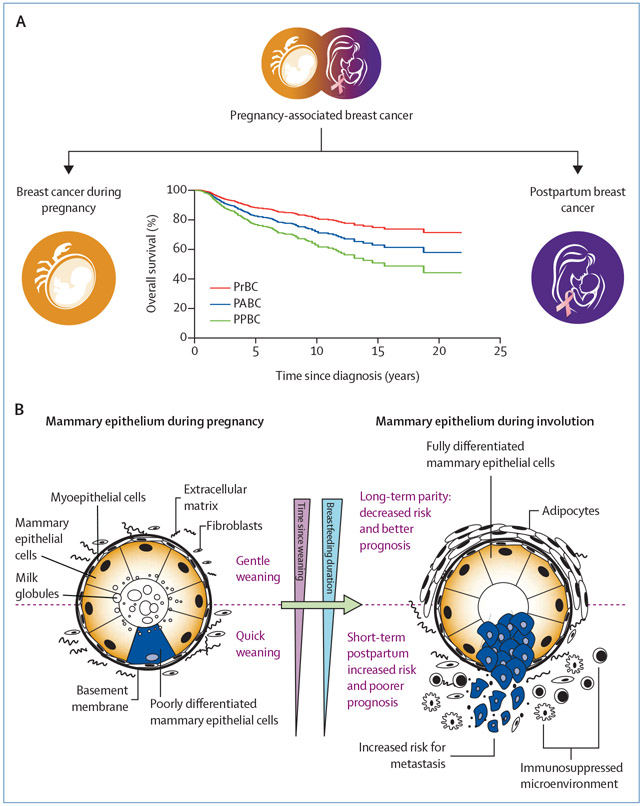Figure: Schematic presentation of the cellular interactions causing the worse clinical outcome of postpartum breast cancer.
(A) The definition of PABC leads to conflicting clinical outcome data. When cases of PABC are differentiated between PrBC and PPBC, the worsened prognosis in this model is specifically true for PPBC. This distinction could explain the discrepancies in prognosis in published studies. (B) During pregnancy and lactation, proliferation and differentiation of the mammary gland that is purported to result in a long-term protective effect of pregnancy against breast cancer occurs. The short-term increased risk for PPBC is attributed to mammary gland involution, a process whereby mammary epithelial cells are subsequently removed by apoptosis to return the mammary gland to its prepregnant state (gentle weaning; upper panel). Involution shares numerous stromal attributes with protumour microenvironments, including immune suppression, which might lead to the formation of aggressive tumours with increased invasiveness (quick weaning; lower panel). PABC=pregnancy-associated breast cancer. PPBC=postpartum breast cancer. PrBC=breast cancer during pregnancy.

